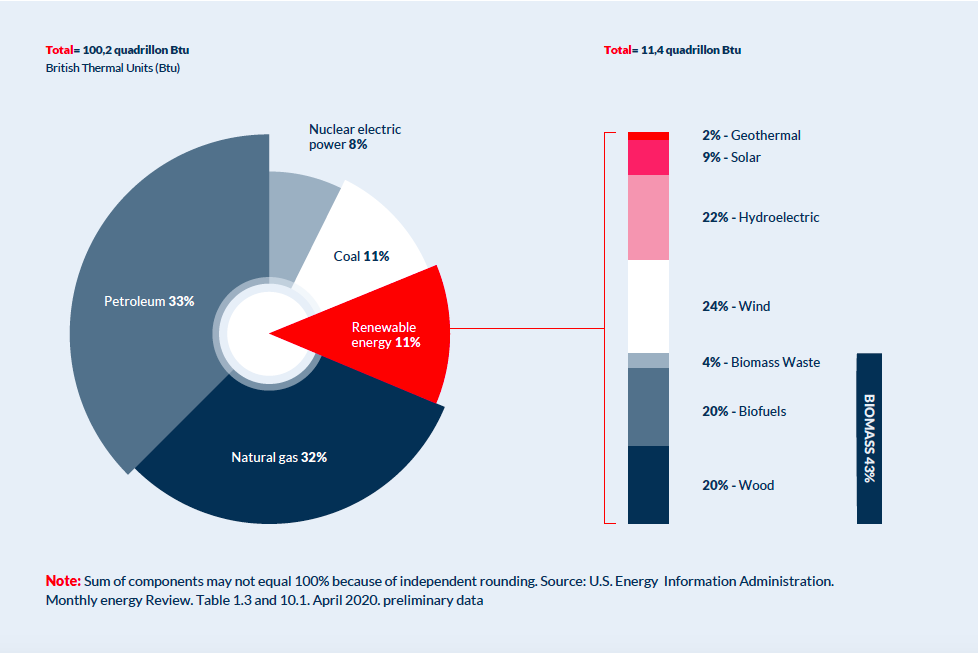
Reducing carbon emissions to the atmosphere is a priority for most countries in the world , but have you ever wondered whether nations are truly prepared for renewable energy? The term “renewable energy” is immediately associated with “green and clean” rather than “oil and gas exploitation”. But what does it mean? Well, it is energy sourced from natural, self-replenishing energy sources, but many of these are flow-limited. In other words, they are virtually inexhaustible but limited in how much energy is available per unit of time.
Usually, renewable sources are thought to include biomass (wood, ethanol, waste, and biodiesel), hydropower, solar, wind, and geothermal heating. For example, until the mid-1800s, wood was one of the main sources of energy, with people using it for heating, cooking, and lighting. From the late 1800s onwards, however, fossil fuels (coal, petroleum, and natural gas) became the major sources of energy.
Until the 1990s, hydropower and wood were the most-used renewable energy resources. Since the 2000s, however, green fossil energy has started to play a major role around the world. For instance, in the European Union, renewable energy reached about 15% in recent years, double what it was in previous decades. In the United States, around 11% of all electricity is renewable.
“Green fossil energy” refers to energy whose primary source is fossil fuels, but which is generated via processes with greenhouse gas emissions below legal limits; in some cases, the net carbon emissions fall to zero. In short, it is a carbon-neutral process to gather fossil fuels without affecting the environment.
Overall, green fossil energy plays a big role in the control of greenhouse gases (GHG), reducing emissions to the environment. According to the Energy Information Agency (EIA), in the United States, energy coming from biomass was 43%, followed by wind, then hydroelectric.
Carbon dioxide (CO2) is one of the most aggressive GHGs, followed by methane (CH4), nitrous oxide (N2O), and hydrofluorocarbons (HFCs).
Given its dangers, every country must work to reduce GHG emissions from burning fossil fuels in order to counteract climate change. This effort must include upstream and downstream petroleum industry services companies as well. These businesses must develop technologies and solutions that decrease GHG emissions, maximizing value beyond the economic perspective.
At Nakasawa Mining and Energy Ltd, we are committed to reducing carbon emissions and helping our clients provide green fossil energy by implementing high-quality standards in our equipment designs and procedures across all manufacturing and operating processes. Our products and solutions are designed to be both cost-effective and environmentally friendly. We can reduce emissions by 10% through our breakthrough steam generation technology, the Super Matroid Heater. Its highly effective heat transfer makes the steam injection process faster, saving on fuel consumption and consequently decreasing GHG emissions to help our clients provide green fossil energy.


